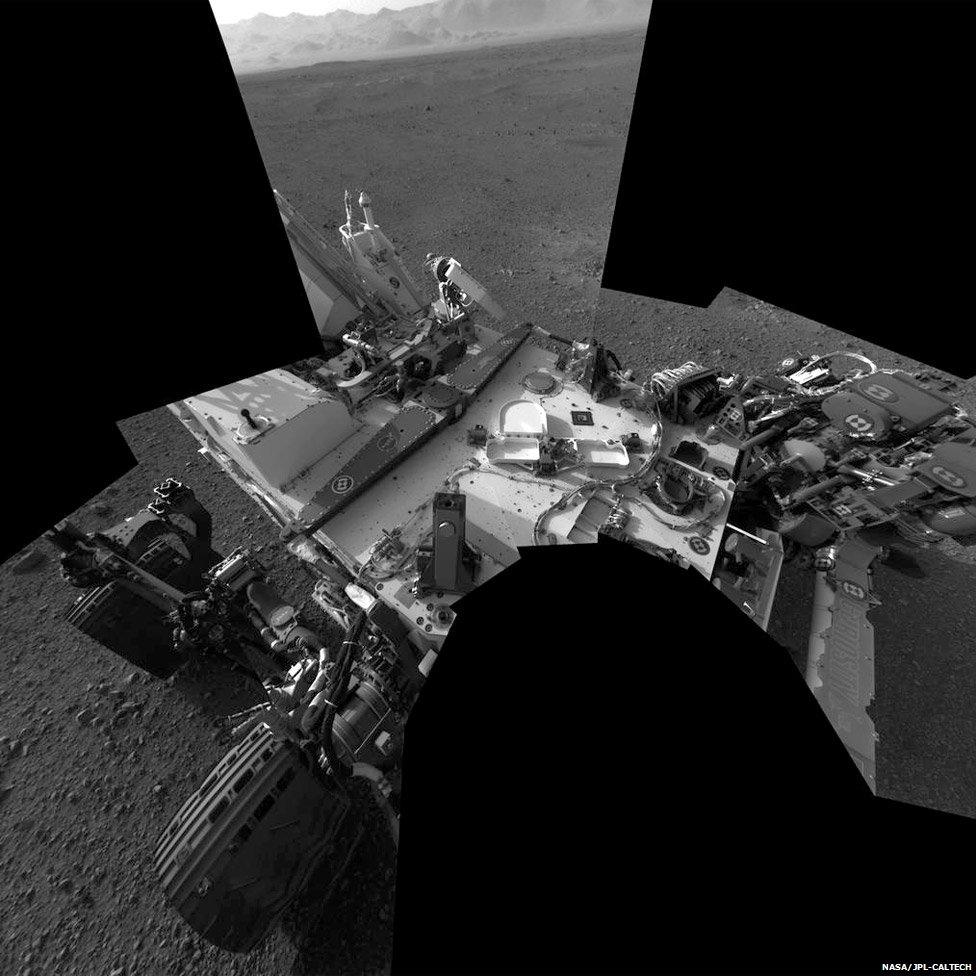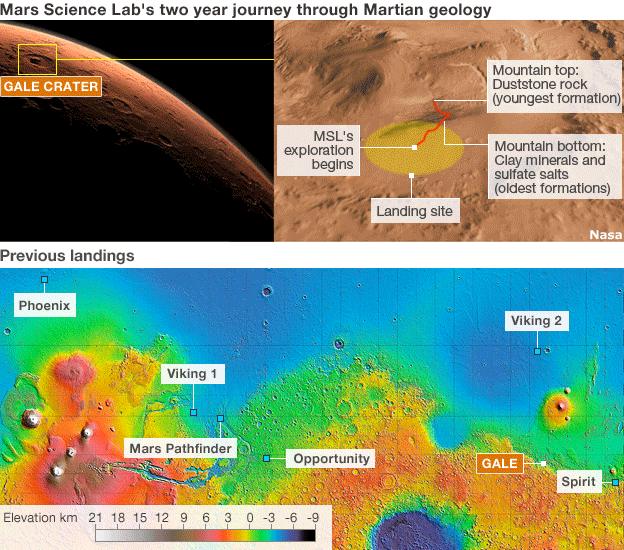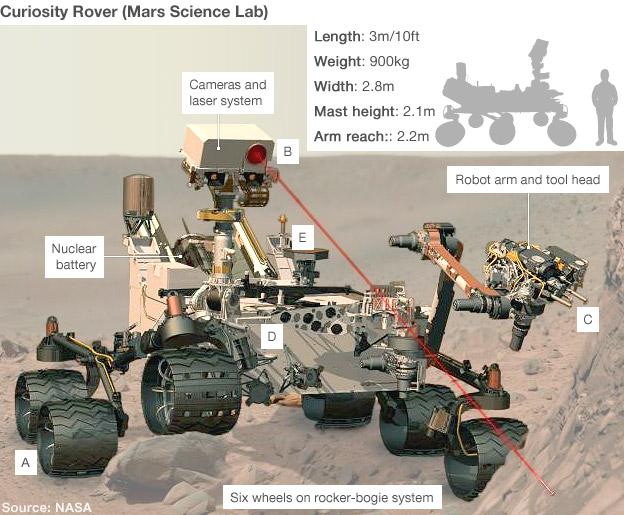Mars rover makes first colour panorama
- Published
Nasa's new Mars rover has returned its first 360-degree colour panorama from the surface of the Red Planet.
The Curiosity robot used its wideangle science camera placed high up on a mast to acquire the frames.
The low-resolution vista, external shows at centre the big mountain that lies in the middle of Gale Crater, the deep depression in which the rover landed.
Curiosity's ultimate goal is to drive towards this peak - informally known as Mount Sharp - to study its rocks.
"This is a very low-resolution panorama," explained Mike Malin, the principal investigator on the rover's Mastcam cameras.
"The individual frames are only 144 by 144 pixels. There are 130 of them in there. It took us about an hour and six minutes to take the mosaic.
Mike Malin: There are two Mastcams on the Curiosity rover
"For the full-resolution panorama, the data volume will be 64 times larger, [and] the resolution will be eight times better. But this was pretty enough and interesting enough that we thought it was worth sharing with you guys," he told BBC News.
The colour is what the camera saw. Apart from the process of blending the individual frames, the only modification made was to brighten the image slightly.
Pictures are deliberately acquired underexposed so as not to saturate any bright regions in the field of view.
Rock target
The full-resolution frames are currently held in the camera memory, but at 4MB per shot it will take some time to get them all back on Earth.
Curiosity has two Mastcams. The one that took this panorama has a focal length of 34mm. The other camera has a 100mm telephoto lens. The two can be used together to make stereo pictures.
The Mastcams will be paramount in helping to plan Curiosity's science mission, choosing where to drive and which rock targets to investigate.
Researchers want eventually to take the robot to the base of Mount Sharp.
Evidence from satellite photos has suggested there are sediments exposed at the base of the 5.5km-high peak that were laid down in the presence of abundant water.
The rover will use its instruments to try to understand what kind of environments existed at the time of the rocks' formation, and whether there were periods in Mars history when any type of microbial life could have thrived.
Martian prospectors
The Curiosity rover mission is being run out of Nasa's Jet Propulsion Laboratory here in Pasadena, California.
A large team of scientists is planning the future work of the vehicle.
The group has divided the ground around the landing site into a series of 1.3km by 1.3km boxes, and has been systematically mapping terrain features and rock textures seen in satellite and rover imagery on to those quadrangles.
"We will use this map to find a path from where we landed to the main target at the base of Mount Sharp," explained Dawn Sumner, a mission scientist and geologist from the University of California at Davis.
"On the way, we're going to have a lot of interesting geology to look at but the team will have to balance our observations and investigations on our drive [with the need] to get to the base of Mount Sharp."
It could take a year or more to reach key locations at the base of the mountain which are some 6.5km away.
Nasa has announced that the quadrangle in which Curiosity currently sits has been named Yellowknife, after the capital of the Canadian Northwest Territories.
Yellowknife was a settlement established by prospectors in the early 20th Century.

The rover is constructing a self-portrait using its black and white navigation cameras. Note the large pieces of grit kicked up on to the vehicle deck during landing


(A) Curiosity will trundle around its landing site looking for interesting rock features to study. Its top speed is about 4cm/s
(B) This mission has 17 cameras. They will identify particular targets, and a laser will zap those rocks to probe their chemistry
(C) If the signal is significant, Curiosity will swing over instruments on its arm for close-up investigation. These include a microscope
(D) Samples drilled from rock, or scooped from the soil, can be delivered to two hi-tech analysis labs inside the rover body
(E) The results are sent to Earth through antennas on the rover deck. Return commands tell the rover where it should drive next
Jonathan.Amos-INTERNET@bbc.co.uk and follow me on Twitter, external
- Published8 August 2012
- Published7 August 2012
- Published7 August 2012
- Published6 August 2012
- Published6 August 2012
- Published4 August 2012
- Published5 August 2012
- Published25 May 2012
- Published30 July 2012
- Published4 August 2012
- Published12 June 2012
- Published26 November 2011
- Published24 November 2011
- Published22 July 2011